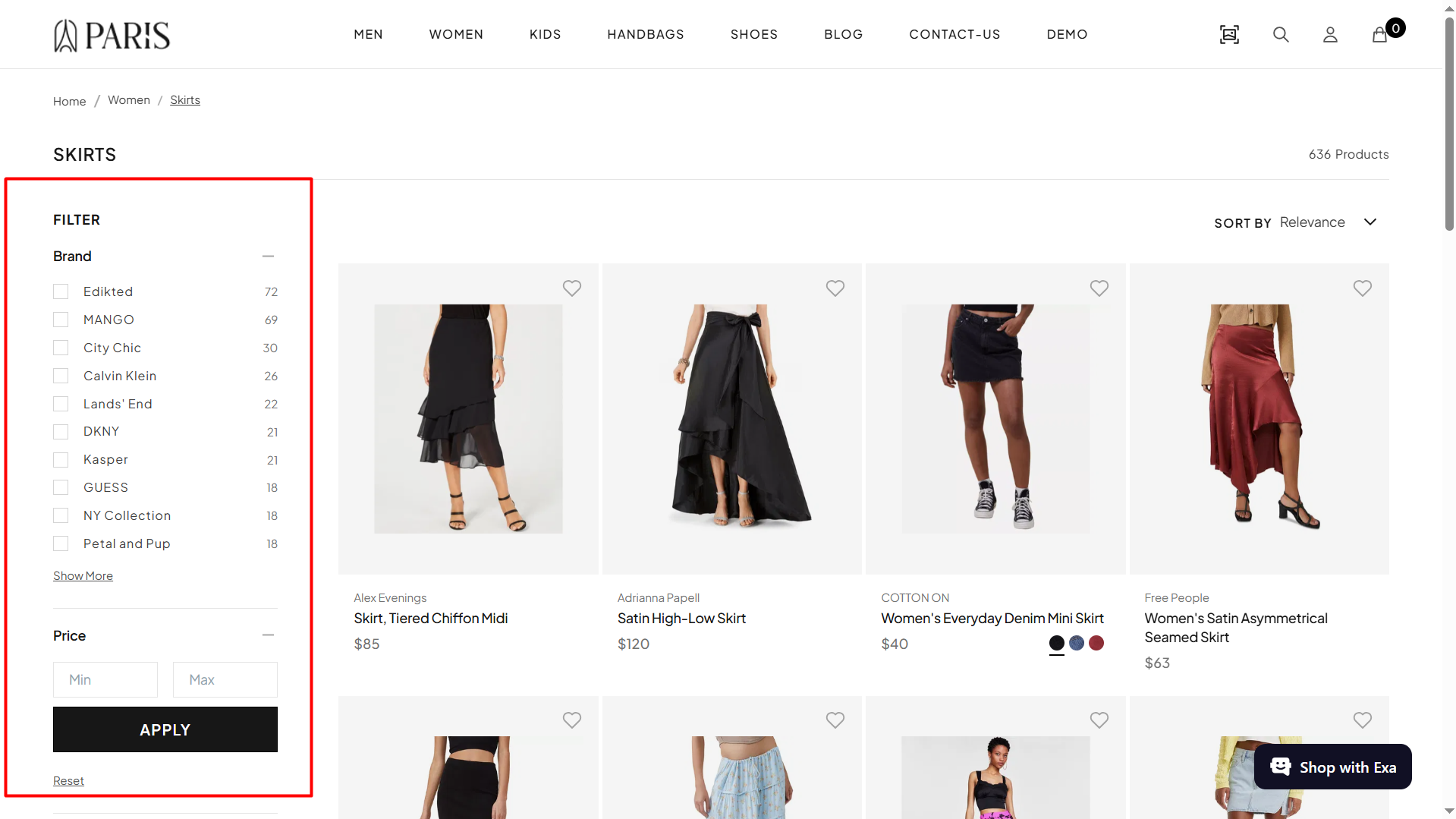
Why Facets Matter
-
Enhanced User Experience:
Facets streamline navigation by enabling users to easily eliminate irrelevant options, resulting in a more focused and efficient search process. -
Improved Relevance:
By filtering out non-essential products, facets ensure that search results are closely aligned with the user’s intent, displaying only the most pertinent options. -
Increased Conversion Rates:
A well-designed facet system helps users quickly find the products they desire, which can lead to higher engagement and improved sales.
Smart Facets Capabilities
| Capability | Description |
|---|---|
| AI-Powered Facet Ranking | Experro tracks every facet interaction—clicks, expansions, time spent—and applies AI to rank filters by real-time engagement, ensuring top choices appear first. |
| Optimized Performance | Monitor facet usage and conversion metrics in real time, then adjust or reorder facets to continually improve engagement and reduce bounce rates. |
| Dynamic Expand/Collapse | Automatically expand the most relevant facet groups based on query or category, while collapsing less pertinent ones for a cleaner, context-aware UI. |
| Selective Hiding | Hide internal or low-value attributes (e.g., out-of-stock sizes, internal SKUs) to simplify the interface and guide shoppers toward available options. |
| Customizable Groupings | Organize facets into logical sections—size, price, brand, rating—so shoppers can navigate large catalogs without feeling overwhelmed by too many choices. |
Practical Example
A customer searches for “hiking boots.”- AI-Driven Ranking: “Size” and “Waterproof” facets surface at the top, reflecting real-time shopper interest.
- Dynamic Display: The “Price” range facet automatically expands to show relevant tiers, while “Brand” remains collapsed until clicked.
- Selective Hiding: Out-of-stock sizes and discontinued models are hidden, keeping the experience smooth.
Best Practices for Facet Configuration
-
Limit the Number of Facets:
Display 5–7 top‑priority facets to avoid overwhelming users. Prioritize facets with the highest impact (e.g., Price, Brand, Category) -
Use Clear, Descriptive Labels:
Ensure facet names are instantly understandable (e.g., “Filter by Size” vs. just “Size”). -
Show Result Counts:
Display the number of matching products next to each facet value to set expectations and guide user choices. -
Test Regularly:
Monitor user interactions with facets and adjust configurations based on performance data to continuously enhance the search experience.